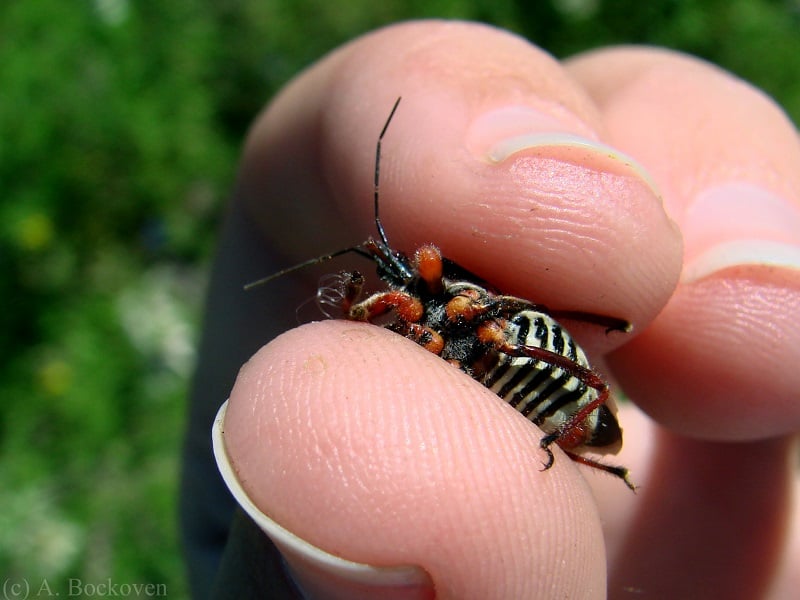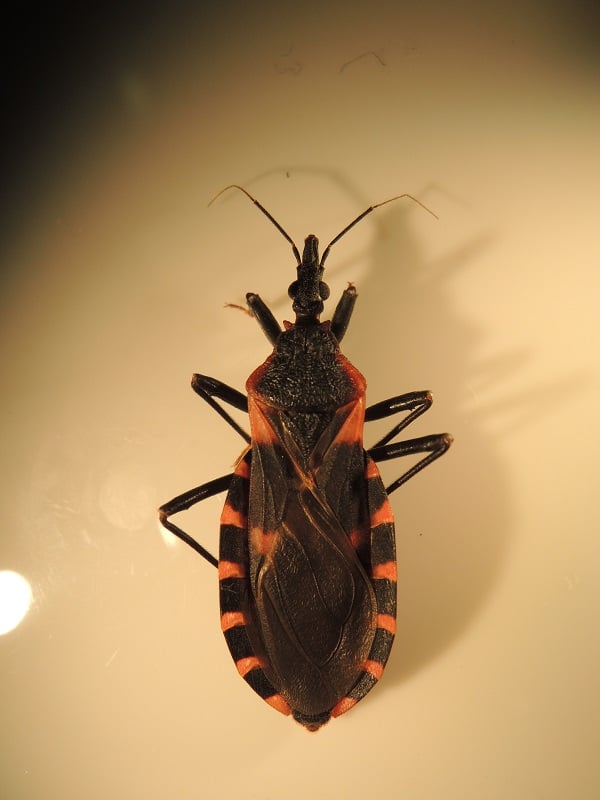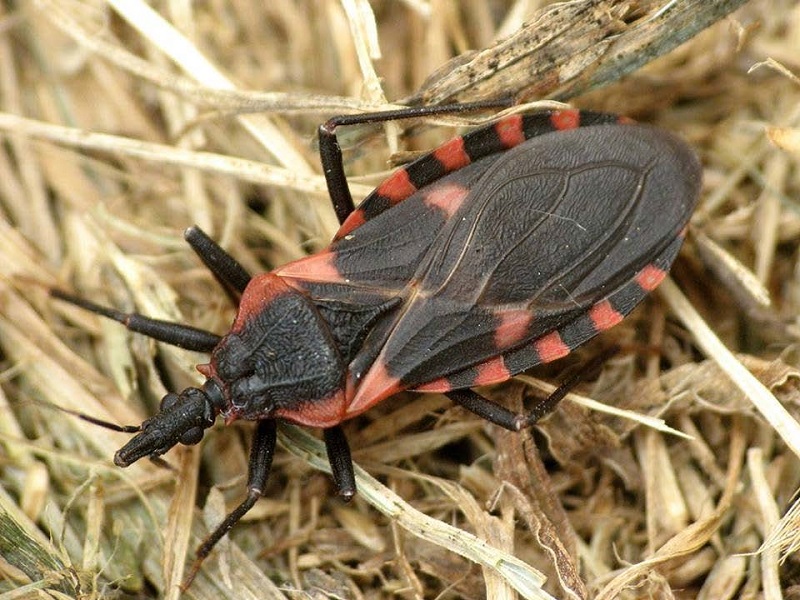Kissing Bug

Image Source: Timeglass Journal
Kissing bugs are known for biting humans on the face, hence their (mistakenly) romantic name. Like mosquitoes and bedbugs, these creepy insects feed on the blood of humans and pets. Drawn by the scent of the carbon dioxide we exhale, kissing bugs–also known as cone-nosed bugs–climb onto the faces of unsuspecting, sleeping individuals and feast on their blood supply. The kissing bug’s ability to sense heat (another reason they’re attracted to humans) allows them to traipse around without being caught.

Image Source: AgriLife Today

Image Source: Welcome Wildlife
While the effects of a kissing bug’s bite can range from slight irritation to full-on anaphylactic shock, the often greater fear is the possibility of contracting Chagas disease. The deadly parasite, Trypanosoma cruzi, lives within the kissing bug’s digestive system, and is excreted after feeding.
Humans can become infected if the parasite enters their bloodstream. Chagas disease is rare in the United States, though it’s a major health concern in some parts of the world such as Central and South America. Check out this video for more terrifying facts about kissing bugs:
Next up: This entry will really–wait for it–get under your skin…





